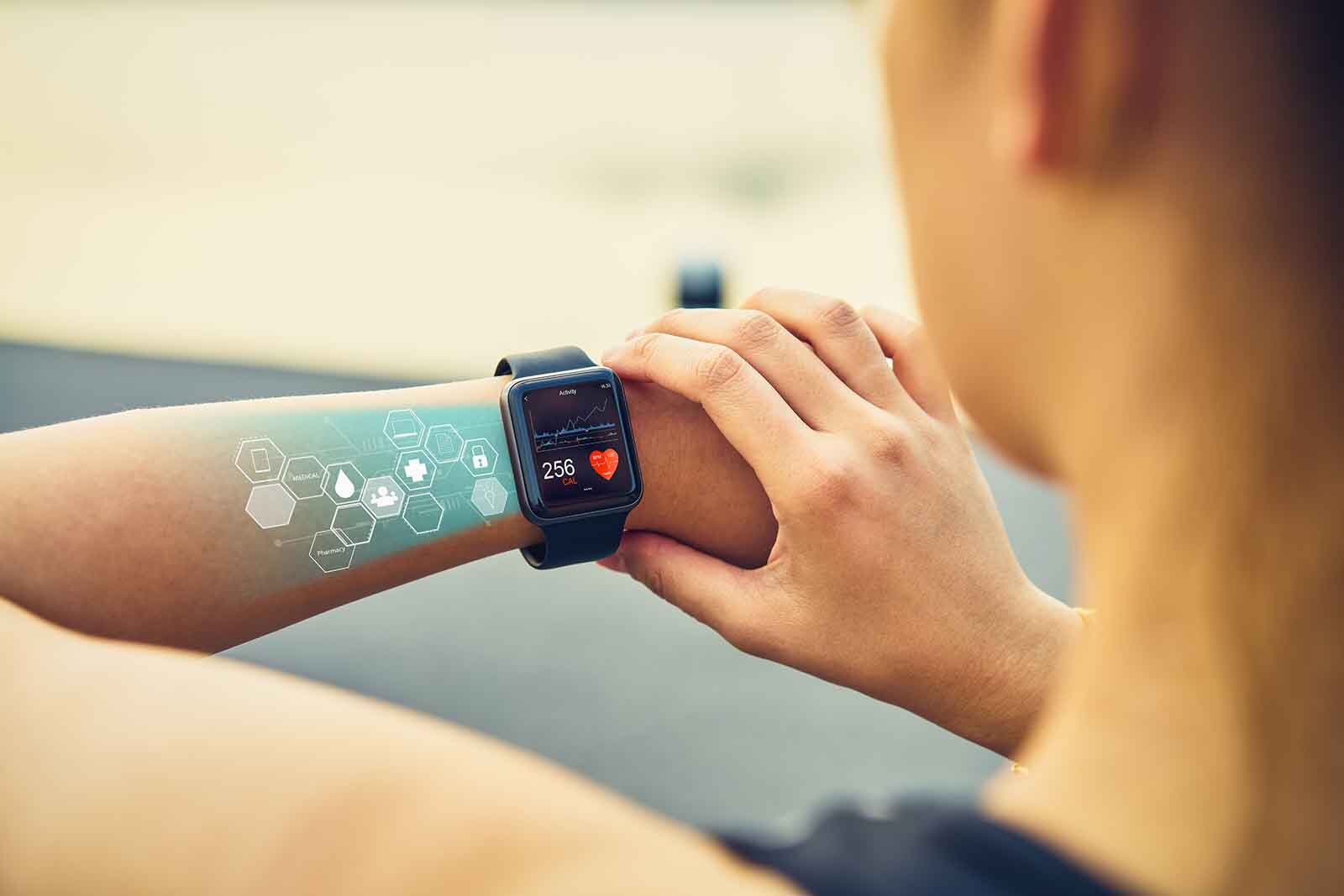Wearable Tech Trends for Health and Fitness
Natalie Brooks August 20, 2025
The wearable technology industry has undergone a remarkable transformation in 2025. Wearable devices are no longer simply tools for counting steps or tracking calories—they are evolving into sophisticated, intelligent health companions that help users monitor, analyze, and improve their overall well-being. From artificial intelligence (AI) and advanced biosensors to sustainable and repairable designs, the trends shaping wearable tech this year are redefining personal health and fitness management.
These wearable tech trends in health and fitness are not only influencing consumers but also affecting how healthcare providers, fitness studios, and wellness programs interact with technology to improve health outcomes. Whether you are a casual fitness enthusiast or a healthcare professional, understanding these emerging trends is essential for navigating the rapidly evolving wearable tech landscape.

1. AI-Powered Personal Health Coaching
Artificial intelligence has emerged as one of the most transformative forces in wearable technology. Devices equipped with AI capabilities now go beyond passive tracking—they actively analyze real-time and historical data to provide personalized guidance.
How AI Enhances Health Tracking
AI algorithms in wearables can interpret patterns in heart rate, sleep cycles, physical activity, and stress levels. Based on these insights, users receive recommendations that are tailored to their lifestyle, goals, and current health status. For example, a user who struggles with sleep consistency may receive customized suggestions for bedtime routines, stress reduction exercises, or optimal timing for workouts.
Popular Devices and AI Features
- Google Pixel Watch 4: This smartwatch leverages AI to offer personalized workout routines and recovery tips, adapting recommendations based on historical health data.
- Fitbit with AI Coach: Fitbit’s AI-powered coach provides daily insights, motivating users with achievable goals and adjustments based on activity patterns.
- Garmin Venu 3: Combines AI with advanced sensor data to guide users in training intensity and recovery periods, preventing overexertion.
Real-World Impact
AI-driven wearables can significantly improve adherence to fitness goals. Studies show that individuals using devices with AI-guided coaching tend to complete workouts more consistently and show measurable improvements in physical activity levels and cardiovascular health over time.
2. Advanced Biosensing Capabilities
The era of basic step counters is over. Wearables are now equipped with advanced biosensors that provide real-time monitoring of critical health metrics.
Key Metrics Monitored
- Heart Rate Variability (HRV): Tracks stress levels, recovery status, and overall cardiovascular health.
- Blood Oxygen Levels (SpO2): Useful for monitoring respiratory health and detecting early signs of illness.
- Electrocardiogram (ECG): Identifies irregular heart rhythms that may indicate cardiovascular issues.
- Skin Temperature and Hydration: Offers early alerts for potential illness or dehydration.
Notable Devices
- Oura Ring: Offers precise sleep tracking, early illness detection, and recovery insights.
- Apple Watch Series 9: Continues to lead with ECG monitoring, SpO2 tracking, and advanced sleep metrics.
- Whoop 4.0 Strap: Provides detailed data on strain, recovery, and sleep quality, which is particularly valued by athletes.
Impact on Health and Fitness
Advanced biosensors allow wearables to serve as early warning systems for health issues, enabling users to take preventive measures. For athletes, this means optimizing performance while avoiding overtraining. For general users, it means better management of chronic conditions such as hypertension, diabetes, or sleep disorders.
3. Sustainable and Repairable Designs
Environmental awareness is influencing the wearable tech industry, with consumers demanding devices that are both durable and eco-friendly.
Repairability and Longevity
Many manufacturers now offer wearables with modular designs, allowing users to replace batteries, screens, or straps without discarding the entire device. For example, the Google Pixel Watch 4 emphasizes repairability, enabling longer device life and reducing electronic waste.
Sustainable Materials
Manufacturers are incorporating recycled and biodegradable materials into wearable construction, minimizing the environmental footprint. This trend aligns with growing consumer preference for products that support sustainability while maintaining high performance.
Consumer Benefits
- Reduced long-term costs due to extended device lifespan.
- Lower environmental impact through less electronic waste.
- Increased brand loyalty toward companies prioritizing sustainable practices.
4. Integration with Fitness Studios and Apps
Wearables are no longer standalone devices; they are increasingly integrated with fitness studios, apps, and virtual platforms.
Real-Time Data in Fitness Programs
Trainers can monitor participants’ heart rate, calorie burn, and workout intensity through wearable data, offering tailored advice during classes. Hybrid fitness models, which combine in-person and virtual training sessions, are particularly enhanced by wearable integration.
Popular Platforms
- Trainerize: Connects wearables to fitness programs for real-time progress tracking.
- Peloton and Mirror: Integrates wearable metrics to adapt class intensity and track performance over time.
Impact on Users
Integration empowers users to follow customized routines, receive immediate feedback, and optimize results. Fitness enthusiasts benefit from measurable progress, while trainers can deliver more effective and personalized guidance.
5. Growth of Medical-Grade Wearables
Wearable devices are increasingly crossing into medical-grade territory, offering continuous monitoring that supports early disease detection and management.
Key Developments
- Continuous Glucose Monitors (CGMs): Allow people with diabetes to monitor blood sugar in real-time.
- Smart Clothing: Embedded sensors track heart rate, respiratory rate, and muscle activity for professional athletes and rehabilitation patients.
- Remote Health Monitoring: Enables healthcare providers to track patient data continuously, supporting telemedicine and proactive care.
Benefits for Health Management
Medical-grade wearables empower individuals to take a more proactive role in their health. Continuous monitoring allows for early detection of potential issues, reducing hospital visits and improving quality of life.
6. Market Shifts: Decline in Entry-Level Smartwatches
While advanced wearable devices are thriving, the entry-level smartwatch market has slowed.
Market Dynamics
Shipments of basic smartwatches have declined in regions like India, reflecting consumer fatigue and saturation. Users increasingly prefer mid-range or premium devices that offer advanced health features, AI coaching, and better integration with apps.
Consumer Preferences
- Desire for longer battery life and durability.
- Demand for comprehensive health tracking beyond basic activity metrics.
- Interest in AI-driven coaching and medical-grade monitoring.
This shift indicates a maturing market where users prioritize value and features over novelty.
7. Wearable Tech as a Tool for Behavior Change
Wearable devices are proving effective not only as monitoring tools but also as instruments to encourage healthier behavior.
Mechanisms for Behavior Change
- Gamification: Step goals, challenges, and achievement badges motivate users.
- Feedback Loops: Real-time alerts for heart rate, inactivity, or sleep encourage timely behavioral adjustments.
- Personalized Recommendations: AI-based insights guide users to adopt healthier routines gradually.
Real-World Evidence
Research shows that individuals using fitness trackers increase their daily physical activity, improve sleep patterns, and adopt healthier lifestyles. By providing actionable data and feedback, wearables can transform health intentions into sustained habits.
8. Emerging Trends: AI, AR, and Next-Gen Sensors
Looking ahead, several emerging trends are expected to shape wearable tech in health and fitness:
- AI Predictive Analytics: Beyond real-time monitoring, AI will predict health trends, potential injuries, and optimal workout schedules.
- Augmented Reality (AR) Integration: Wearables may incorporate AR overlays to provide visual feedback during workouts or guided exercises.
- Next-Gen Sensors: Future wearables will include biochemical sensors capable of tracking hydration, electrolytes, and even certain hormone levels.
These innovations will make wearables more intuitive, immersive, and capable of delivering holistic health management.
Conclusion
Wearable tech trends in health and fitness for 2025 reflect a shift toward smarter, more sustainable, and fully integrated devices. AI-powered coaching, advanced biosensors, repairable designs, medical-grade monitoring, and behavior-driven features are transforming wearables from basic tracking tools into essential health companions.
As these devices become increasingly sophisticated, they empower users to make informed decisions, enhance fitness outcomes, and take proactive steps toward long-term well-being. Whether for personal fitness, chronic disease management, or professional athletic performance, wearables are set to play an indispensable role in shaping the future of health and fitness.
References
- The Verge. (2025). Google’s Pixel Watch 4 has big ideas and a strong AI focus. Available at: https://www.theverge.com (Accessed: 20 August 2025).
- Wired. (2025). The Fitbit App is turning into an AI-powered personal health coach. Available at: https://www.wired.com (Accessed: 20 August 2025).
- Verywell Health. (2025). Oura Ring vs. Apple Watch: A doctor weighs in on which tracks your health more accurately. Available at: https://www.verywellhealth.com (Accessed: 20 August 2025).








